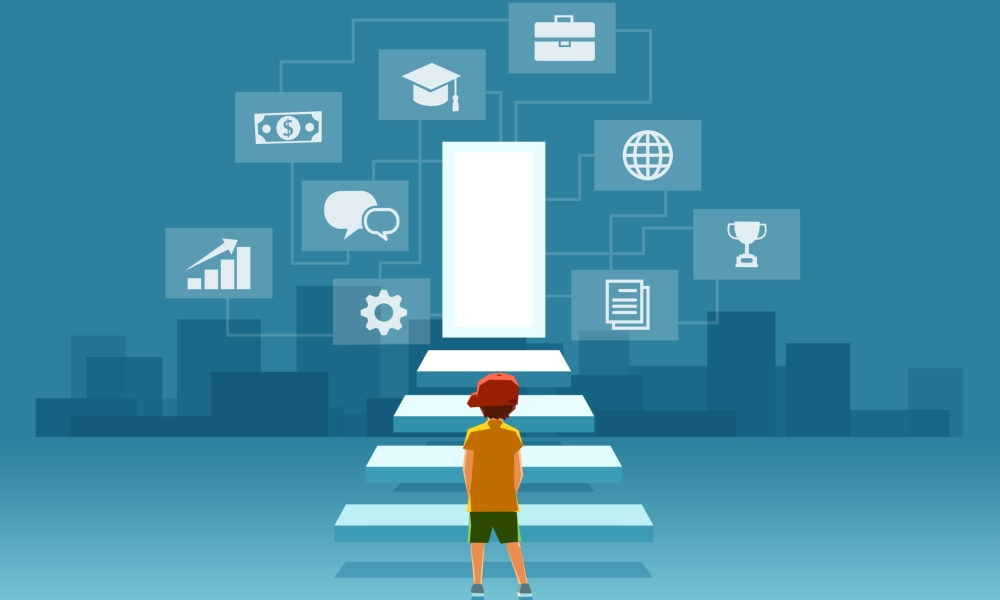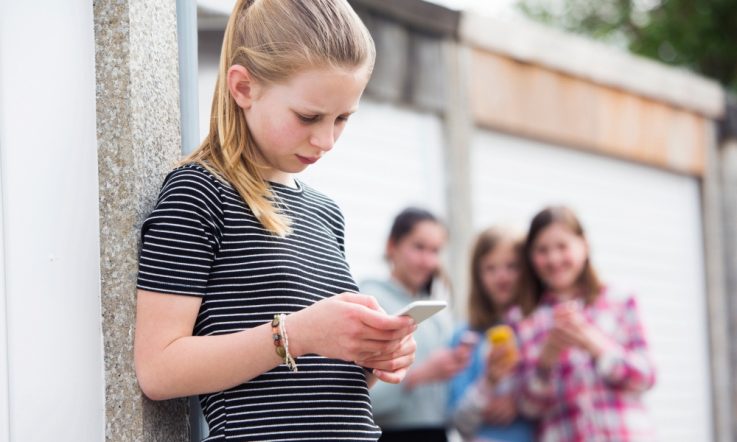It might surprise you to know that data from the 2012-13 Australian census told us that young adults most often used the internet for learning; 93 per cent of 16- and 17-year-olds reported going online for educational purposes (Australian Bureau of Statistics, 2014).
This is an admirable statistic and one that perhaps we find increasingly difficult to believe a mere six years after that census and with the rise in mobile, tablet computing and online gaming. With the recent major increase in online and remote learning across Australia, we need to consider the implications of increased online interactions, even if they are for educational purposes. We need to ask what teachers and parents can do to keep children safe and engaged while they are learning remotely.
Remote learning is both a fantastic learning opportunity and a massive hill to climb for all of us. When we reach the peak, though, there is the potential to have developed substantial online learning skills for our students and to see them as digital citizens who can use the internet safely and responsibly for learning, play and fun.
Basic e-safety strategies that are usually proposed include the popular advice that internet-connected devices be used only in shared, family spaces. This is becoming more difficult, as parents and siblings are often at home and working online at the same time. Beyond this advice, Australia's eSafety Commissioner suggests considering a few critical, cybersafety topics, including cyberbullying, image-based abuse, and managing your digital footprint.
With more and more websites and online services available to our children, and us, it has become impossible to block, hide or delete every webpage we see as inappropriate. Instead, we now focus on developing Digital Citizenship skills that can be applied no matter the device, website or app. In the classroom, teachers usually have a few strategies and policies in place to help ensure that students are safe online. While working remotely, though, a few challenges present themselves, for teachers and parents.
Challenges for teachers
These include:
- Do students know what to do if they see something inappropriate?
- Do they understand what bullying might look like, and how to avoid becoming complicit?
- How should students act in the online space? What does ‘good' behaviour look like?
Saw something inappropriate?
If your student sees something inappropriate online, they should be supported to tell an adult (a teacher or parent). They should not ‘delete and ignore' the content, but should bring it to the attention of an adult who can guide them to deal with the content appropriately. This might include reporting it to the website owner or to support staff within the school.
Making a judgement to tell you, or their parent, about something they have seen is the first step in students becoming good 'digital citizens'. Recognising if an image is rude, inappropriate or mean is a crucial skill, and students are more likely to tell you what they see if you have discussed with them ahead of time what might happen.
What does online bullying look like?
We know what it means to be a bully in person: the ongoing, demeaning treatment of others that can be physical and emotional and may include social seclusion of individuals. In the online space, bullying can be the same, inappropriate behaviour. In the online space, however, there are a few extra challenges. Online bullying behaviour can be anonymous. It can occur through numerous devices and isolating people online can be hidden and provide a space to increase poor behaviour. The role of the bystander is important to understand. A bystander in a bullying situation is someone who sees the bullying occur but does not intervene to help the person being bullied, nor do they contribute directly to the bullying. In the digital world, this means reading online posts, watching videos or seeing images that demean a person, but doing nothing about it.
Students need to be aware that doing nothing in these situations can contribute to bullying behaviour. A 'view' of a video is counted, posts accumulate 'likes'. Online bullying, during this time of remote learning, is an area we should be talking to our students about. We need to provide opportunities for behaviours to be discussed and addressed.
How can I be a good digital citizen?
Being a good digital citizen includes: being polite and friendly online and using content legally (i.e. not through illegal sharing of websites or downloads); engaging with online materials and working with others to help, support and learn together; and keeping personal details private and helping others do the same.
Developing these skills is similar to the real-world behaviours that our society and cultures engender as we grow up. Speak politely to others, listen and respond carefully, contribute and collaborate with others, help and support where you can.
As our students continue to learn remotely, these skills become increasingly important. You can support your students while teaching remotely by reinforcing the good practices you see and hear online and by working with students with inappropriate behaviours.
References
Australian Bureau of Statistics. (2014) Household Use of Information Technology, Australia, 2012-13. (Catalogue No. 8146.0).
What policies does your school have for students, and teachers, around safe and responsible use of the internet and digital resources? How have these informed planning and delivery of remote learning?
Dr Joanne Blannin says teachers can support students ‘by reinforcing the good practices you see and hear online and by working with students with inappropriate behaviours’. Think about your own teaching when working remotely – do you regularly draw attention to good practices? How do you address inappropriate behaviour?



